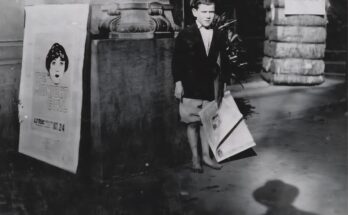Anna Gertruda Kantor was born in the industrial city of Katowice, located in southern Poland, a region with a diverse and vibrant population before the outbreak of World War II. As a young Polish woman, Anna likely experienced a modest life shaped by the traditions of Silesia, a land where Polish, German, and Jewish communities coexisted. Born into a world already marked by tension and transformation in the interwar years, her early life would have been shadowed by the rise of fascism in neighboring Germany and the growing unease in Europe. Despite this, Katowice remained an important cultural and economic center, and Anna’s childhood would have been marked by both the promise of progress and the quiet rumblings of the storm to come.
With the invasion of Poland by Nazi Germany in September 1939, everything changed. Katowice, quickly annexed into the Third Reich, became subject to brutal Germanization policies and widespread persecution, especially targeting Jews, political dissidents, and other groups deemed undesirable by the Nazi regime. It was in this increasingly dangerous and oppressive environment that Anna lived during the early years of the occupation. It is unclear whether she was Jewish, Polish Catholic, or belonged to another targeted group, but by 1942, she had become one of the countless victims swept up in the machinery of Nazi terror.
On 30 October 1942, Anna Gertruda Kantor was deported to Auschwitz, the infamous Nazi concentration and extermination camp located not far from her hometown. She was registered in the camp under the prisoner number 23314. Auschwitz had become operational in 1940 and by 1942, it was at the height of its role in the Holocaust, functioning both as a labor camp and a center for the mass murder of Jews and other persecuted people. For those transported there, the conditions were horrific—inhuman living quarters, forced labor, starvation, disease, and constant brutality defined daily life.
As a prisoner, Anna would have been stripped of her identity, her belongings, and her dignity. Reduced to a number tattooed on her body or recorded in camp files, she became part of a dehumanizing system designed to erase individuality. Whether forced to work under grueling conditions in one of the camp’s many labor details or subjected to the squalor and cruelty of the women’s barracks, Anna’s days in Auschwitz would have been a living nightmare. The winter of 1942–1943 was particularly brutal, with freezing temperatures adding to the immense suffering.
Records state that Anna perished in the camp on 4 March 1943, just over four months after her arrival. The cause of her death is not specified in surviving documents, which is sadly typical for many victims of the Holocaust. She may have succumbed to illness, starvation, exhaustion, or been selected for execution. Each death in Auschwitz was part of a massive, mechanized process of destruction, designed to operate efficiently, with little regard for the human beings whose lives it ended.
Anna’s fate was shared by over a million others who died in Auschwitz, the majority of whom were Jews targeted for extermination. Yet every individual, like Anna, had a unique story, a life before the war, relationships, dreams, and hopes. Remembering these lives is an essential act of defiance against the Nazis’ efforts to erase their victims not only physically, but also historically. The preservation of names, dates, and fragments of individual stories allows us to restore some measure of humanity to those who perished.
Though Anna Gertruda Kantor’s life was cruelly cut short, her memory endures in records and memorials. Institutions such as the Auschwitz-Birkenau Memorial and Museum work tirelessly to collect and preserve the histories of victims like her. Each preserved name, each recorded number, like 23314, is a reminder that behind the statistics of genocide stood real people—mothers, daughters, sisters, friends—each with a past worth remembering.
In commemorating Anna’s life and death, we bear witness to the horrors of the Holocaust and reaffirm our collective responsibility to ensure such atrocities are never repeated. Her story, though one among millions, symbolizes the suffering of countless innocent individuals and calls on us to uphold the values of dignity, remembrance, and justice in the face of human cruelty.


